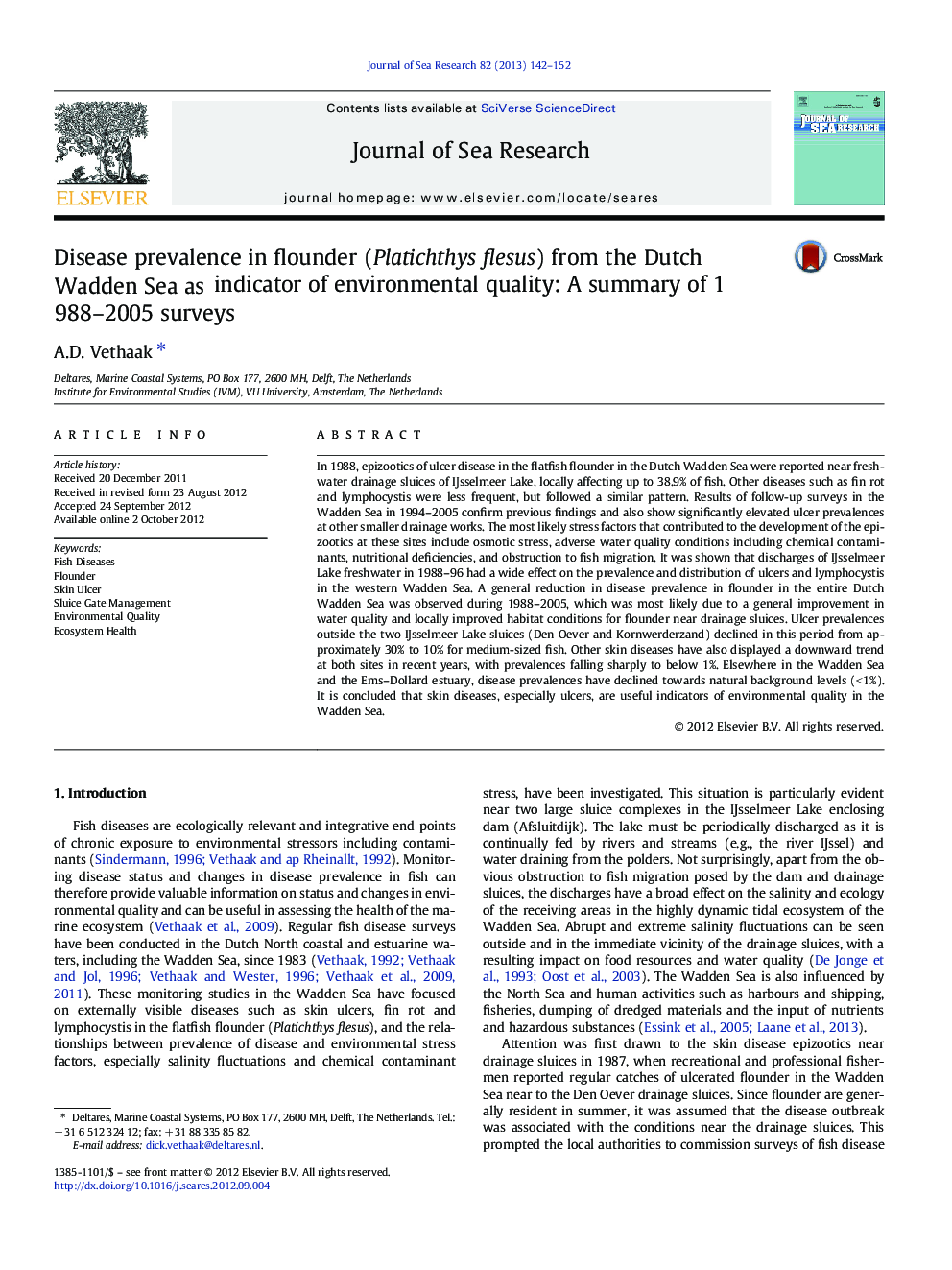| Article ID | Journal | Published Year | Pages | File Type |
|---|---|---|---|---|
| 6387513 | Journal of Sea Research | 2013 | 11 Pages |
In 1988, epizootics of ulcer disease in the flatfish flounder in the Dutch Wadden Sea were reported near freshwater drainage sluices of IJsselmeer Lake, locally affecting up to 38.9% of fish. Other diseases such as fin rot and lymphocystis were less frequent, but followed a similar pattern. Results of follow-up surveys in the Wadden Sea in 1994-2005 confirm previous findings and also show significantly elevated ulcer prevalences at other smaller drainage works. The most likely stress factors that contributed to the development of the epizootics at these sites include osmotic stress, adverse water quality conditions including chemical contaminants, nutritional deficiencies, and obstruction to fish migration. It was shown that discharges of IJsselmeer Lake freshwater in 1988-96 had a wide effect on the prevalence and distribution of ulcers and lymphocystis in the western Wadden Sea. A general reduction in disease prevalence in flounder in the entire Dutch Wadden Sea was observed during 1988-2005, which was most likely due to a general improvement in water quality and locally improved habitat conditions for flounder near drainage sluices. Ulcer prevalences outside the two IJsselmeer Lake sluices (Den Oever and Kornwerderzand) declined in this period from approximately 30% to 10% for medium-sized fish. Other skin diseases have also displayed a downward trend at both sites in recent years, with prevalences falling sharply to below 1%. Elsewhere in the Wadden Sea and the Ems-Dollard estuary, disease prevalences have declined towards natural background levels (<Â 1%). It is concluded that skin diseases, especially ulcers, are useful indicators of environmental quality in the Wadden Sea.
⺠Disease data of flounder from the Dutch Wadden Sea during 1983-2005 were analysed. ⺠Epizootics of skin ulcers were observed near freshwater drainage sluices. ⺠There was a widespread reduction in disease prevalence since the early 1990s. ⺠The disease reduction is most likely due to improved water quality conditions. ⺠Skin diseases, especially ulcers, are useful indicators of environmental quality.
